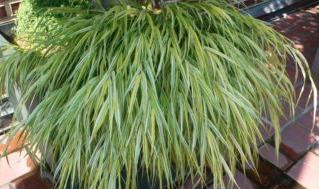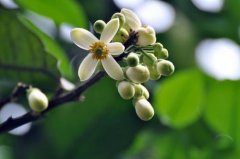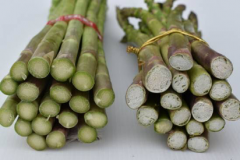How to plant potted Japanese forest grass? What are the planting conditions of forest grass and how to take care of them
Japanese forest grass, or Hakonechloa, is an elegant arched plant with bamboo-like leaves. This forest dweller is very suitable for shade and performs well in containers. Plant forest grass in containers in dark to partially dark landscape locations, bringing a hint of oriental flavor to the garden, with perfect low-light plants.
Plant forest grass in a container
Using ornamental grasses in flowerpots allows gardeners to control where they grow, and if they are young or semi-hardy, keep them. When the temperature gets cold, jars can always be buried underground or taken indoors to help preserve the root system, but in spring and summer, plants can be respected on balconies, balconies or other dark corners. Forest grass grown in containers is an excellent example of an ornamental plant that propagates in pots.
Forests and grasslands are found in temperate regions of Japan. Grass No. 5 to 9 of the United States Department of Agriculture is very hardy. It is considered to be a deciduous, semi-hardy, warm seasonal grass and will die out in winter.
The golden leaves are particularly spectacular in a dark pot, triggered by colorful shadow ages or just themselves. The root system is particularly suitable for limit settings in containers. If the freezing temperature is threatened, it will not need to be re-reported for several years, and forest grass grown in containers can be easily moved.
As an additional reward, forest grass container care is minimal, and the plant is very tolerant of most conditions, as long as it stays moist and in low light conditions. It is not favored by deer either.

How to plant forest grass
Forest grass is a reliable, slow-growing grass with a wide range of ornamental appeal. It can be planted on the ground or in attractive containers. Choose a growth medium with good drainage, or use the same amount of peat moss, horticultural sand and compost.
Japanese forest grass needs uniform moisture, but can't stand swamp conditions, so it needs a container with several drainage holes. Combine it with a larger container and use dark or blue foliage plants, such as hairpins or purple-tailed sweet potato vines, for maximum impact.
In the northern climate, it can tolerate part of the sun, but in warm areas, it must grow in a partially to completely shaded position.
Nursing care of forest grass container
Keep Japanese forest grass evenly moist. You can cover the top, fine bark and even gravel with organic matter, such as compost, which prevents weeds and preserves moisture.
Occasionally freeze occurs in winter, burying the pot in the ground or moving indoors. The northern gardener needs to move the container to a place where the plant will not freeze.
It provides half the water that is usually available in winter and increases with the arrival of spring. Every three years, separate factories to achieve better growth. Remove it from the container in early spring and use a sharp, clean tool to cut the plant into 2 or 3 parts, each with leaves and roots. Plant each part in a fresh pot culture medium.
Cut dead leaves in autumn or early spring to make way for new leaves. The grass has few disease or pest problems and will add a wonderful containerization to the mobile garden.
- Prev

What is the use of grapefruit flowers? Pomelo flowers can be made into sparkling drinks in addition to tea.
In addition to making grapefruit flowers into "pomelo scented tea", the agricultural value-added proofing center of Hualien Agricultural improvement Farm has recently successfully developed and extracted organic grapefruit flower essence from Ruisui Township and added it to wheat juice to make "pomelo white jade sparkling drink". Only in Hualien Field on the 20th.
- Next

How do you think the asparagus is fresh and tender? Is the asparagus soft? is it bad? what nutrients are there?
Asparagus is not only a very representative spring ingredient in Europe and the United States, but also a top delicacy for many gourmet diners in spring. For a long time, asparagus has been called the king of vegetables, and it is also listed as "top grade" in Shennong Materia Medica because of its high fiber content.
Related
- A course of planting techniques and methods on how to grow carrots
- How to plant the latest tulips?
- Is it better to pick tea in the morning or in the afternoon? When is the best time for tea to be picked? what is the third or fifth tea?
- Launch Yuanxiao Happy combination Haocha + Tea Yuan healthy Taste
- Penghu Tourism "Fireworks 20 Parade with You"
- 2022 West Lake Happiness holds "Digital Revitalization Voucher" and draws iphone13 and laptop.
- Banqiao Fuzhou social houses are designed to change start-up combined with police elimination to create a safe and livable environment
- The convenient measure of "mechanical weeding" in Xinbei has been abused and the Agriculture Bureau has imposed heavy penalties on the illegal land consolidation.
- Changgeng University Joins Hands with Four Memory Factories to Rescue Memory Talent Shortage
- The list of Taiwan's top 100 MVP managers is listed by the Director-General of the Farmers' Association of Sanxia District.

